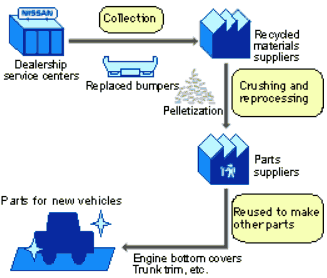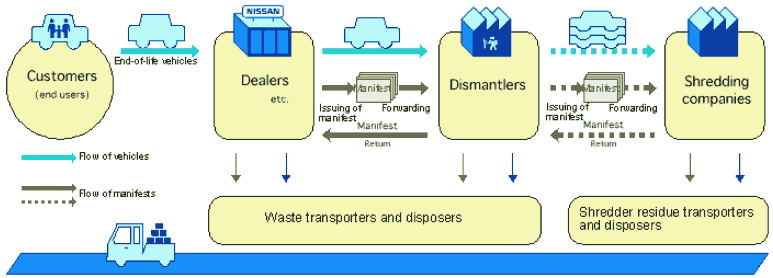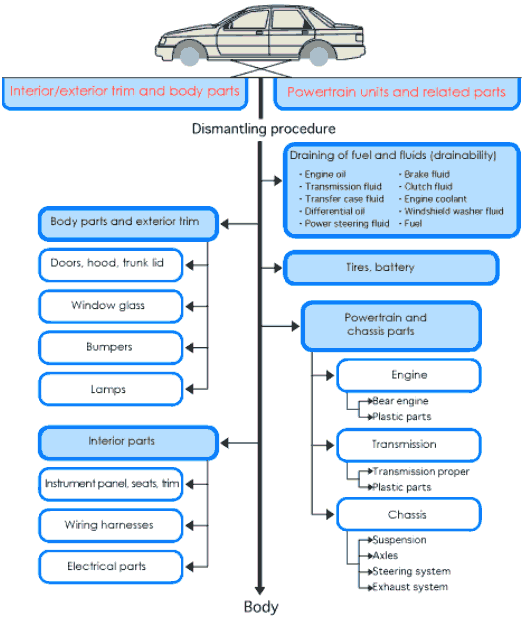| Toyota and Nissan - A Case Study | |
|
ToyotaToyota is finding ways to recycle automotive scrap and has built a pilot plant to develop and refine new recycling methods. In particular Toyota's pilot recycling plant is becoming a showcase for recycling shredder residue. Shredder material is the material left behind after the easily recycled steel and non-ferrous metals have been removed. "Our best example so far is the silencer padding we make from recovered urethane foam and commingled material," says Toyota. The Toyota team is also is cultivating commercial applications for copper, glass, and other materials recovered from the shredder residue. The copper, for instance, is proving a useful additive in cast aluminium. The material that Toyota has learned how to recycle accounts for about 15% of the total shredder residue weight. But it accounts for more than 60% of the bulk. Toyota is also finding ways to deal with the material that remains un-recyclable. The company compacts the residue into pellets for incineration or space-efficient disposal in landfill. Although this is not ideal methods are being developed to increase the amount of re-cycle-able material that is retrieved. |
|

|
|
| Toyota is also developing more-recyclable plastics for bumpers, instrument panels, and other parts. Unlike earlier plastics, the new materials will be recyclable several times over, and allow for a high percentage of recycled material in the moulding compound. | |
NissanNissan has a well-developed design and re-cycling system. Perhaps more than many companies Nissan seek to remove and effectively recycle as many parts and materials as possible before ELVs are shredded. |
|

|
| Because Nissan has chosen to concentrate on design they are now attributed with the first 100% re-cycle-able car. In addition they are developing technologies to recover useful energy from the shredder material for which the market value is currently minimal and they are developing complete return systems with dismantling companies. In fact the vehicles are being designed with "de-construction" in mind. Based on analyses of ELVs, Nissan has developed a "dismantling procedure evaluation system" to facilitate efficient removal of parts from vehicles with an eye toward advancing appropriate treatment and recycling. Various efforts are being made to reduce the dismantling time of new vehicles under development. |

|
| Task 6: Investigate the vehicle disposal/retrieval route, identify the elements you consider would be most important in successfully achieving the End of Vehicle Life Directive. Assess the possible impacts on the current vehicle dismantling market. |